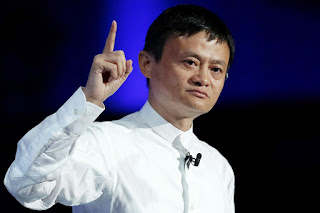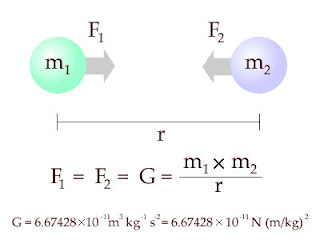Would you hire someone with more than 40
years? Metaphor jewelry and trinkets
In a remote village, a
trader created his fortune by buying and selling jewelry and art objects of
very good quality. Had two children whom I teach the secret of the business and
hoped they were also skilled traders. When he died, each son received half of
the inheritance. The eldest, sagacious, serene and sober, he used the money to
acquire valuable, authentic and of course beautiful art jewelry. The second,
fond of the good life, play and pleasure saw enough to live, surrendered to the
frenzy of the holidays and pleasures and to demonstrate the brother who had
also "learned" the lessons of the father, he devoted a small part
heritage for buying trinkets and decorative, colorful, bright but without any
artistic or intrinsic value objects, everything was shiny plastic.
When bad times came, the
greater was able to sell the valuable jewels she had acquired to overcome the
bad times. The lower tried to sell their trinkets and only met with ridicule or
aggression of others, considering that it intended swindle.
In today's business CEOs
or HR heads, usually guided by misleading paradigm or bad experiences, assume
that people over 40 are not trained to perform successfully in the
organization. They wrongly assume that
modern training is better than the old, in some cases unfounded, but most only
about changing names or surface type shell formation. Moreover, they often hire
young, believing that possession of diplomas and other details, not always
provable, it gives them an advantage over the older ones. (1)
Those over 40 years can
have all the attributes of youth: Continuous learning, will, capacity for
teamwork, self-motivation, achievement-oriented, multitasking. Surely all you
can lose all hair is some or all of them; or maybe they can not run up a ladder
; but they have other qualities that are valuable to the company as vision,
serenity, more reflective ability, desire for quality and / or excellence in
actions under their charge (production, services); loyalty.
And what are these older
professionals 40 years can be comparable or better than young people? Present a
classification of candidates for an organization. The following chart shows the
distribution in a plane. The critical level on the axis powers, Contributions
to the organization, indicates the point from which it is apparent the
difference between jewelry and trinkets. For example, the ability of teamwork
or leadership attributes are not winds or cloudy soles, made to be noticed
immediately.
a) Wind. Youth, millennials or similar,
with less than 40 years with little experience, many self-conceit and sometimes
unfounded. The contribution may be minimal, no commitment or loyalty. They
could be the trinkets as they cost little and at first glance are brilliant.
b) Hurricane. Millennials and the like, have all the attributes expected in
this group. With the experience they can get to be “sun”, have potential,
commitment and can make significant contributions. But as hurricanes, they have
lots of energy but are short; Youth is fleeting.
c) Sun. Those over 40, with all the
attributes of hurricanes but additionally have other aspects that make them
superior. Stability, commitment, loyalty, serenity, thinking ability, vision.
Can anyone prove that the ability to think is not valuable for the company?
d) Sun cloudy. Those over 40 years
with some experience, but high level of conformism, adaptation or camouflaging
with intoned. They do not want or can not learn more, avoid effort, a
self-imposed ceiling. They can be perfect employees or senior civil servants.
A word of caution is
necessary. Not all youth group a) are trinkets, some has enormous potential and
gradually become suns. Nor are all over 40 are suns; some are simply "aged
winds" or "off suns" to vegetate and camouflages in
organizations; perhaps the perfect place for them are public institutions.
There are deficiencies or weaknesses that need to be identified and for it also
requires great skill. In short, who should choose and discriminate, it must
also be a sun to avoid being dazzled by anything or anyone. Unfortunately few
recruiters are suns, why are discarded to those over 40 who have genuine gifts
and potential.
In fact, recruiters hire
people less than 40 years for the costs, they are the buyers of trinkets. If
you are identified as sun and is hired, perhaps one who does it is another sun.
The executive responsible for the recruitment or buying jewelry you know
identify and pay the right price. A wind or cloudy sun never will because they
have limited vision or because they are afraid of you, afraid that the opaque
(read, inferiority complex, ignorance)
Often is not accessible a
consistent, logical and used method or tool to identify talent, so that the
criterion of age and possession of documents or certificates is imposed. This
criterion is wrong in most cases.
What does the buyer
trinket in times of crisis? By having staff untalented without commitment,
without loyalty, without initiative, vision and ambition, it will fail in a
growth plan or reorganization. A reengineering program would be as useless as
plowing on the beach. There is no Plan B.
What can do the buyer of
jewelry? It features people who have all the skills and capabilities needed to
successfully develop any strategic plan, reorganization, reengineering or
whatever. More than one will have the appropriate response to the dilemmas and
needs critical moment. There are plans B, B', B'', B'''y more.
I present an excerpt
from a revelation of a person, although it was not refused by to have more than
40 years, had the projections and the potential of a "sun". I do not
make the translation to capture the message in his own words:
"I failed 3 times in college. I applied 30
times to get a job but I have Always Been rejected. When KFC came to China for
the first time, We were 24 to apply and I was the only one to be dismissed. I
wanted to go into the police and 5 postulants, I was the only one not to be
accepted. I applied 10 times to
return to Harvard University USA and I was rejected. "
Jack Ma, founder of
Alibaba, the world's richest man 22º in 2015 according to Forbes, with a
fortune valued at $ 29.8 billion.
Some will say that all
will not be the Jack Ma in the world. True, but some may discover opportunities
and improve their situation. Jack Ma says "Never give up Because you failed once, Know That
failure is Sometimes out of the way to reach your Intended route"
If you, dear reader, has
more than 40 years and is excluded by recruiters, maybe you're unlucky to meet
a buyer trinket. If you are a sun, you must be persistent and you´ll finally
find a jewelry buyer, someone who identifies you as a jewel.
It is necessary that as
a jewel you also dazzle, show your brilliance and splendor. Demonstrate your
talent, continue your training and learning (you have on internet now the best at
hand), maintain and strengthen your vision and values.
(1) A professor at Harvard, Harvard yes , said that in
these times students could not solve the tasks, problems and challenges his
students proposed for 20 or more years ago. How will the rest of the world,
with definitely lower than Harvard level? Promise identify the teacher who made
this mention and demonstrate the logic of his argument in another installment.
References
Alibaba founder Jack Ma
was rejected from 30 jobs, treats including KFC, before becoming China's
richest man. Ashley Lutz, Feb. 17, 2015,
http://www.businessinsider.com/alibaba-founder-jack-ma-on-rejection-2015-2




















